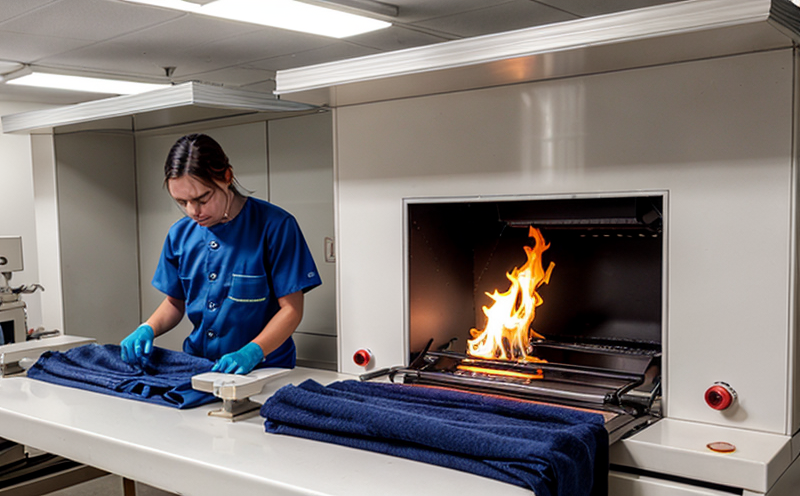Fire Resistance Testing of Polyester Fabrics
Fabric flammability testing is a critical process in ensuring safety and compliance with international standards. Fire resistance testing specifically evaluates how well textiles, particularly polyester fabrics, withstand exposure to fire. This service is essential for industries such as automotive, aerospace, healthcare, and consumer goods where the risk of fire hazards is high.
Polyester is widely used due to its durability and strength but can pose significant risks if not properly tested. Fire resistance testing involves exposing textiles to specific heat sources and measuring their ability to self-extinguish or resist ignition. The test assesses both the intrinsic properties of the material, such as chemical composition, and the design and manufacturing processes.
The process typically begins with specimen preparation, which includes cutting samples of polyester fabric according to specified dimensions. These samples are then subjected to controlled burning conditions in a specially designed furnace or chamber. The duration of exposure is critical; it must be consistent across all tests to ensure accurate results.
Key parameters measured include the time required for ignition and self-extinguishment, maximum flame spread rate, and residual heat release after extinguishing. These metrics provide insights into the material's fire resistance capabilities, helping manufacturers optimize designs for enhanced safety.
The testing methodology adheres to international standards such as ISO 13565-1 and ASTM E2039, which outline precise procedures for conducting flame spread tests on textiles. Compliance with these standards is mandatory in many countries, ensuring consistency and reliability across different laboratories.
Post-testing analysis involves evaluating the char formation, burn rate, and overall structural integrity of the fabric. This information is crucial for product development, quality assurance, and regulatory compliance. Regular testing not only enhances safety but also protects brand reputation by demonstrating a commitment to high standards.
In summary, fire resistance testing plays a pivotal role in safeguarding against potential hazards associated with polyester fabrics. By adhering to stringent protocols and leveraging advanced instrumentation, this service ensures that products meet the highest safety standards.
Applied Standards
| Standard | Description |
|---|---|
| ISO 13565-1:2009 | Methods for Determining the Burning Behavior of Textiles Part 1: Flame Propagation Test (FPAT) |
| ASTM E2039-18 | Standard Test Method for Evaluating Fire Resistance of Textile Fabrics by Means of a Cone Ignition Source |
The testing process is meticulously guided by these international standards, ensuring that every aspect—from specimen preparation to final analysis—meets the highest quality benchmarks. Compliance with ISO 13565-1 and ASTM E2039 guarantees consistency in test results across various laboratories.
Why Choose This Test
- Ensures compliance with international safety standards.
- Enhances product durability and reliability.
- Protects consumer health by reducing fire risks.
- Provides valuable data for continuous improvement in material design.
- Facilitates easier market entry in countries with strict regulations.
The fire resistance test is more than just a regulatory requirement; it's an investment in product safety and brand reputation. By choosing this service, organizations can demonstrate their commitment to excellence and customer satisfaction.
International Acceptance and Recognition
- ASTM E2039 is widely accepted in North America.
- ISO 13565-1 is recognized globally for its comprehensive approach to textile flame testing.
- The results of these tests are often requested by international buyers and regulatory bodies.
The acceptance of these standards ensures that the fire resistance test findings are universally understood and respected. This recognition enhances trust in the products tested, making them more competitive on a global scale.





